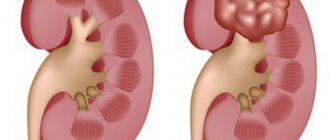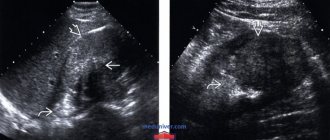We offer the best treatment option that you can find on the Internet:
- We will under no circumstances dissuade you from treatment with doctors. Decide everything for yourself.
- We will select for you those traditional medicine preparations that are suitable for your patient specifically for his diagnosis, well-being and state of the body.
- You will not make mistakes by choosing the wrong treatment. Succumbing to advertising.
- You will receive by mail exactly the drugs you need now.
- You don't have to worry about quality or fakes . We are the developers and manufacturers ourselves.
- We will advise you on how to combine our traditional medicine with official medicine.
- We will continue our treatment even if the doctors refuse
- In order not to waste your precious time , we will offer you treatment between procedures with doctors...
- We will offer you recommendations on the patient’s diet
- We will suggest you routine for the patient to ensure a healthy lifestyle.
- We will offer you videos and literature to boost morale and positive mood.
- You can consult with us, sort out a blood test ...
- Start by filling out the Patient Questionnaire .
Now read more information.
Kidney diseases and their features
There are 2 kidneys in our body. They are small - the size of a fist (120-150 grams), located in the lumbar region. The buds are similar to bean seeds. From the side of the recess, the ureter and supplying vessels are “attached” to them. The kidneys are protected by fatty tissue. There are also adrenal glands - these are glands necessary for the kidneys. Together, the adrenal glands and kidneys are contained in an elastic capsule.
One of the advantages of this paired organ is that each of the kidneys can work alone . A healthy kidney “pulls out” the entire urine production system. The other one may die, be removed, or not perform its functions fully, but the “other half,” under a favorable set of circumstances, works so well that the body often does not feel its “loneliness.”
| Rice. 1. Urinary system. |
The kidney filters the blood, eliminates excess fluid, removes waste, and at the same time urine is formed, which enters the bladder through the ureter and is then discharged out.
The kidneys remove products of nitrogen metabolism and toxins (including drugs!) from us, regulate the amount of organic and inorganic substances in the body, and participate in the metabolism of carbohydrates and proteins. The kidney is also a “partner” in the formation of biologically active substances: renin, which regulates blood pressure and the functioning of the adrenal glands; erythropoietin, which affects the rate of red blood cell formation; vitamin D, which regulates calcium metabolism in the body (it is necessary to maintain the health of our bones). The kidneys maintain the acid-base balance of the blood plasma.
A malignant kidney tumor behaves differently than tumors in other organs. It can appear at a young age and grow slowly, imperceptibly. As you know, every cancer behaves like a “guerrilla” - it harms quietly and imperceptibly. But kidney cancer is especially tricky.
In the event that one of the kidneys is affected by cancer and the tumor is discovered before the formation of metastases, then the patient’s prospects are very optimistic. The tumor will not even have time to leave the capsule. But when the tumor reaches a critical mass, the rate of its development increases markedly. Metastases form quickly. The body is exposed to an excess of toxins that the kidney removed from the patient before the illness. Exhaustion occurs and internal bleeding is possible. Due to kidney dysfunction (or one kidney !) the body is simply poisoned!
Although kidney cancer is treated with radiation, cytostatic and hormonal therapy, the disease is practically insensitive to all of these methods. But doctors don’t have any other options yet. In these cases, treatment of kidney cancer with folk remedies , namely mushrooms, comes to the rescue.
Kidney tumors - classification
Almost 90% of detected tumors in the organ in question are malignant. Benign types of kidney tumors can be just as dangerous because they tend to grow and expand rapidly. This provokes compression and subsequent damage to blood vessels and nerve endings in the urinary system, causing internal bleeding and acute pain.
Kidney tumors are also classified according to their origin - parenchyma or pelvis. In the first case, the following malignant formations are known:
- fibroangiosarcoma;
- renal cell carcinoma;
- lipoangiosarcoma;
- mixed Wilms tumor;
- myoangiosarcoma.
Benign parenchymal neoplasms:
- lipoma;
- adenoma;
- hemangioma;
- myxoma;
- fibroma;
- angiomyolipoma;
- myoma;
- oncocytoma;
- dermoid;
- lymphangioma
Malignant tumors growing from the pelvis:
- squamous cell carcinoma;
- mucoglandular cancer;
- sarcoma;
- transitional cell carcinoma.
- Benign pelvic formations:
- angioma;
- papilloma;
- leiomyoma.
Etiology
There is no exact etiological picture regarding this disease, so clinicians identify common causes that can lead to the appearance of tumors in the body:
- hereditary predisposition;
- a history of cancer, chronic diseases of the genitourinary system;
- alcoholism, smoking;
- autoimmune processes in the body;
- radiation effects on the body;
- long-term use of medications;
- too weakened immune system.
In principle, when diagnosing a kidney tumor, there is no goal to establish the cause of its formation, since this information is not of particular value for determining further treatment tactics. The purpose of diagnosis is to determine the type of tumor and the development of associated complications.
Kidney tumor - symptoms, signs
At the beginning of tumor growth, clinical manifestations are absent or so insignificant that they remain without due attention. They are observed when the kidney tumor progresses and increases in size - the symptoms may be nonspecific and resemble other diseases. If the slightest discomfort appears in the lumbar region, it is important to immediately contact a nephrologist for diagnosis.
Benign kidney tumor
The described group of neoplasms is rarely accompanied by any signs; they are mainly discovered by chance during an ultrasound examination. A pronounced clinical picture may be present if a large benign kidney tumor has grown - symptoms:
- arterial hypertension;
- blood in urine;
- aching or dull pain in the lower back on one side, often radiating to the thigh or groin;
- varicocele;
- disturbance of urine outflow.
Sometimes the kidney tumor reaches such a size that it is visible visually. It looks like a bump protruding above the surface of the skin. The color of the epidermis over the benign formation does not change. Such neoplasms can be easily and painlessly felt with your fingers, especially if you bend slightly towards the affected organ or bend at the waist.
Malignant kidney tumor
All of the listed signs of benign formations can indicate the development of cancer. Additionally, the following clinical manifestations may be present:
- fatigue and weakness;
- weight loss;
- renal colic;
- deterioration or loss of appetite;
- anemia;
- increase in body temperature to 37-38 degrees;
- high erythrocyte sedimentation rate;
- polycythemia;
- obvious damage to internal organs (due to metastases from malignant cell accumulations).
Without professional diagnostics, it is impossible to determine what kind of kidney tumor is developing - the symptoms and treatment of the pathology in question directly depend on the nature of the tumor. Two doctors, a urologist and a nephrologist, are involved in the study and treatment of any formations of the urinary system. If malignant accumulations of unspecialized cells are detected, you should contact a urologist.
Causes of kidney cancer
If you have scrolled through the pages of our website, you have probably noticed that I am especially attentive to the SOURCE of cancer.
In situations where the local doctor “does not know the etiology of the disease (origin),” curious scientists find one general pattern: PEOPLE WITH CANCER HAVE PREVIOUSLY HAD SERIOUS INFECTIOUS (VIRAL) DISEASES. This is a “multinational” conclusion, which is based on a generalization of world practice.
So, the causes of kidney (kidney) cancer .
1. Viruses and infections . Scientists have proven and practitioners have confirmed that some types of lung cancer, clear cell kidney cancer , as well as ovarian, cervical, colon and rectal cancers affect the body due to infection with the papilloma virus, genital herpes or phenotype.
Separated from each other, they are not so dangerous, although alone, after DNA transformation, they can lead to the development of oncology. But sometimes they connect, and then the situation is almost uncontrollable. The mechanism is something like this: a viral infection enters the body and affects the organ, which “defends itself” with the help of the immune system. The viral infection multiplies and goes ahead (with improper treatment), releases toxins that penetrate a previously healthy cell and change its functioning - it is the cell that degenerates into a cancerous one.
In addition, physiologists at Henry Ford Hospital in Detroit found that a significant increase in the risk of kidney cancer occurs when the hepatitis C virus enters the body.
Scientists worked on information about 67,000 patients who were observed between 1997 and 2008. 0.6% of patients who were diagnosed with hepatitis C also suffered from kidney cancer. Moreover, in the control group, whose members did not have the hepatitis C virus in their bodies, kidney cancer occurred in 0.3% of cases, that is, half as often. From this it follows that the hepatitis C virus most likely contributes to the development of kidney tumors.
That is, hepatitis C affects not only the liver ! The liver, according to scientists, suffers minimally - but the virus “belonged” to it.
According to statistics, the average age of those suffering from kidney cancer coupled with a viral infection is significantly less than that of those who had kidney cancer, but whose body was not infected with the hepatitis C virus. This information was collected by Dr. Gordon (see the journal Cancer Epidemiology, Biomarkers&Prevention").
2) High blood pressure.
| Rice. 4. X-ray of kidney cancer. |
3) The next cause of kidney cancer is treatment with kidney dialysis (removal of excess waste).
4) Smoking . The number of smokers who develop kidney cancer is twice as high as that of non-smokers.
5) Overweight . Some experts estimate that obesity increases the risk of kidney cancer in two out of ten patients.
6) Heredity associated with gene disorders (von Hippel-Lindau syndrome). People with such baggage can also develop oncology in other organs.
7) Ecology . This includes working with hydrocarbons, asbestos, nitro compounds, petroleum products, and cadmium. Working in a blast furnace shop and in steel production in general is harmful to the kidneys.
 MEDICINE , in particular, taking analgesics that contain phenacetin (kidney cells are transformed). Diuretics also “help”.
MEDICINE , in particular, taking analgesics that contain phenacetin (kidney cells are transformed). Diuretics also “help”.
9) Gender – it seems impossible to name it as a reason, but men get kidney cancer more often than women.
Kidney tumor - diagnosis
The main and most informative tests for suspected tumors are ultrasound and computed tomography. They help detect even a small kidney tumor in the early stages of growth. Sometimes nephroscintigraphy is additionally performed - a graphic display of the organ using a gamma camera with the preliminary administration of a radioactive drug.
Diagnosis of kidney cancer may include the following tests:
- magnetic resonance imaging with contrast agent;
- cavography;
- aortography;
- selective renal arteriography;
- puncture biopsy.
Malignant formations metastasize and cause systemic disorders, therefore the list of diagnostic measures includes:
- X-ray of the lungs;
- blood and urine tests;
- computed tomography of the skull and spine.
How is diagnosis done?
CT scan of organs allows you to get an objective picture of their condition.
Modern urology offers a huge selection of diagnostic measures aimed at identifying pathologies of the genitourinary system. A CT or MRI reveals a hypodense formation that has a low density that does not correspond to the state of healthy organ tissue. The following diagnostic procedures are prescribed:
- general clinical urine test, blood biochemistry;
- radiography and excretory urography;
- angiographic examination;
- Ultrasound of the kidneys;
- cavography;
- biopsy.
Tumor in the kidney - what to do?
The treatment tactics for patients with this problem depend on the nature of the tumors. A small benign tumor that does not cause any symptoms and is not prone to growth and degeneration is subject only to observation and regular ultrasound examination. Large formations that interfere with the normal functioning of the urinary system or that can change their quality will have to be removed surgically.
The situation becomes more complicated if a malignant kidney tumor is diagnosed - treatment in this case is selected individually for each person, taking into account:
- general condition of the body;
- stage of cancer;
- presence and number of metastases;
- size and location of the tumor;
- existing chronic diseases;
- degree of target organ damage and other indicators.
Classic chemotherapy and radiation are ineffective against kidney cancer. They are used only for inoperable tumors as measures to maintain the quality of life of an incurable patient. Additionally, a drug complex is prescribed - immunomodulators (alpha interferon, interleukin-2 with 5-fluorouracil) and hormonal treatment (oxyprogesterone).
Stages and treatment of kidney cancer
Stage I. The tumor is located within the kidney. Neighboring organs and lymph nodes are not affected (survival rate 81%).
Stage II . The surrounding tissue or adrenal gland is affected. The tumor does not penetrate either the lymph nodes or neighboring organs (survival rate 74%).
Stage III . The tumor sizes vary. It affects the “renal” lymph nodes, as well as the vessels of the kidney and abdomen. Neighboring organs survive and the cancer does not penetrate them (survival rate 53%).
Stage IV . This includes almost any cancer that has grown into neighboring organs (spleen, intestine; the anterior abdominal wall is affected). Metastases to distant parts of the body (survival rate 8%).
| Rice. 5. Stages of kidney cancer. |
Treatment for kidney cancer in medical institutions is almost standard: surgery, radiation therapy, immunotherapy and chemotherapy. metastases when diagnosed .
| Rice. 6. Removed kidney with malignancy quality tumor. |
In official traditional medicine, during the treatment of kidney cancer, complications are possible - hair loss, noticeable susceptibility to infections, high blood pressure, mouth ulcers, diarrhea, loss of appetite, weakness, nausea or vomiting, changes in blood sugar levels, pulmonary edema, etc. .
Therefore, do not panic when diagnosed, but think carefully about how to help your body, especially after surgery? How to restore his strength? My products will significantly help you with this. Prevention of kidney cancer
If you have a predisposition to developing kidney cancer or if you want to protect yourself from this disease, you should follow a few simple rules.
- Check your body regularly for viral infections. If any are identified, be sure to undergo treatment.
- Avoid or at least minimize your alcohol consumption and the number of cigarettes you smoke.
- Be careful what you eat. Food should be healthy and environmentally friendly, as well as complete.
- Follow your doctor's orders and take prescribed medications on time.
- Try to avoid unsafe work in hazardous industries.
- Strive to minimize occupational exposure to chemical carcinogens.
- Get checked regularly. This is especially important for those who have a genetic predisposition to cancer, and for those who work in a “dirty” enterprise.
Remember about a healthy lifestyle: psychology-movement-nutrition!
Surgery to remove a kidney with a tumor
Surgical intervention may involve excision of the pathological formation itself with small areas of nearby tissue or removal of the entire organ. The only criterion for choosing which kidney operation will be performed is the tumor and its characteristics. Radical nephrectomy (complete removal of an organ with adjacent structures) is performed if the neoplasm has one of the following properties:
- malignancy;
- very large size;
- localization near the renal vessels;
- multiple metastases;
- rapid growth.
The final decision on the type of surgery is made by the urologist. Bilateral nephrectomy is disabling, but in some situations, open surgery is the only way to prolong the patient's life and prevent extensive and irreversible damage to the cancer's target organs - the brain, spine and lungs.
Laparoscopy of a kidney tumor
The gentle operation is carried out using special microscopic equipment through small punctures in the abdominal wall. It is recommended for small benign kidney tumors, if the pathological accumulation of cells is not prone to degeneration into cancer and growth. This type of surgical manipulation ensures the preservation of the organ and the rapid return of the patient to normal life. During the operation, the kidney tumor and a thin layer of surrounding tissue are removed. This helps prevent the re-formation of benign cellular structures.
Rehabilitation after removal of a kidney with a cancerous tumor
Due to unilateral nephrectomy, the second paired organ takes on the entire load of the urinary system. The main task of a person who has undergone this procedure is to preserve the functions of a healthy kidney. Recommended:
- water hardening;
- daily walks;
- avoiding hypothermia;
- protection against any infectious diseases;
- regular examinations by a nephrologist or urologist.
The diet after removal of a kidney with a tumor should include easily digestible foods low in protein. The basis of the diet are:
- low-fat varieties of fish and meat;
- Rye bread;
- some fermented milk products;
- fruits and vegetables.
All dishes are steamed, boiled, stewed or baked. It is important to completely exclude:
- smoked meats;
- pickles;
- canned food;
- fried and fatty foods.
general description
A kidney cyst is an abnormal structural formation of a round shape, bounded by a connective tissue capsule, which contains fluid inside.
Acquired kidney cysts are detected, according to various sources, in 30–40% of patients over the age of 50 years, more often in men. In most cases, cysts do not manifest themselves in any way and are discovered accidentally during an ultrasound scan. A large cyst can compress blood vessels, which over time leads to ischemia and gradual atrophy of the affected kidney.
In most cases, a kidney cyst is a congenital disease. However, it may occur due to a prolonged course of the inflammatory process in the renal tubules, for example, with pyelonephritis.
There are congenital and acquired cysts, single (solitary cyst) and multiple. If one kidney is affected, they speak of multicystic kidney disease, and if two kidneys are affected, they speak of polycystic kidney disease. Depending on the nature of the contents, cysts can be serous, hemorrhagic, or infected (with the development of an inflammatory process). Depending on the location, they can be cortical, subcapsular, intraparenchymal, peripelvic or multilocular.
Tumor on the kidney - prognosis
The effectiveness of treatment is assessed in terms of five-year survival. When a tumor is detected in the early stages, it is 70-80%. If the renal veins were involved in the process, the rate decreases to 40-60%. When regional lymph nodes are affected - 5-20%. In later stages of cancer, the prognosis is worse, with 95% of patients dying within 5 years after nephrectomy. For a correct assessment, it is important to consult a doctor if a malignant kidney tumor is detected - how long they live with such a diagnosis, a specialist will answer more accurately.
Kidney tumor - benign and malignant types - Journal of diets and weight loss MyMedNews.ru
Effective treatments
According to statistics, up to forty thousand new cases of tumor damage to the kidneys are diagnosed every year in the world, including in combination with other pathologies of the urinary system.
How long do patients with kidney tumors live? At different stages, forecasts may differ significantly. The guaranteed five-year survival rate (the ability to live 5 years or more) is:
- Stage 1 – up to 81%;
- Stage 2 – up to 74%;
- Stage 3 – up to 53%;
- Stage 4 – up to 8%.
What to do if you have a tumor in your urinary system? Patients with a diseased kidney are treated according to the following principles:
- For the most part, there is no need to treat benign formations; regular monitoring is sufficient. Such tumors are removed through surgery only when they reach enormous sizes.
- To treat cancerous tumors, surgery is used, as well as a combination of surgical techniques and radio-beam and chemotherapy methods.
- Some patients require immunotherapy in addition to surgery.
- If surgery is not possible in the later stages of the disease, palliative treatment methods are indicated. Advanced cancer has virtually no cure.
- Symptomatic therapy eliminates the clinical manifestations of the disease and improves the patient’s well-being. Thus, narcotic analgesics are an effective remedy for intense pain.
Laboratory diagnostic methods
The classic triad of symptoms of kidney cancer: pain in the side, blood in the urine and a palpable mass formation is now practically never encountered. But a noticeable amount of blood in the urine (and sometimes clots in the form of “worms”) is still not uncommon. Sadly, even an obvious admixture of blood in the urine cannot always prompt the patient to visit a doctor: usually this situation appears once and a year or more may pass before the next episode. A small amount of blood in the urine, the so-called microhematuria, occurs in only 3.2% of cases with kidney cancer. However, a general urine test is included in the clinical minimum of examinations for suspected kidney cancer.
The kidneys synthesize many biologically active substances that regulate calcium metabolism, the release of excess water, the creation of new red blood cells and other important functions. Cancer cells produce these substances in pathological quantities, and the resulting changes are reflected, among other things, in general clinical and biochemical blood tests.
Due to excess production of the active form of vitamin D and parathyroid hormone-like peptide, calcium levels increase (hypercalcemia ≥ 2.6 mmol/L occurs in approximately 20% of cases).
Erythropoietin synthesized by tumor cells increases the number of red blood cells, while the number of other blood cells remains normal (erythrocytosis of more than 8 x 109/L is considered significant).
The level of the enzyme lactate dehydrogenase (LDH) is high in kidney tissue, while there is little of it in the blood: an increase in the concentration of this metabolite is observed in about a third of women with kidney cancer and in a fifth of men.
Hormone-like substances secreted by the tumor impair liver function (nephrogenic hepatopathy): the level of blood alkaline phosphatase increases, the amount of proteins - blood albumins - decreases and the level of proteins - globulins increases (this is called dysproteinemia), the concentration of bilirubin, transaminases (AST and ALT), interleukin increases -6. In a coagulogram (blood clotting test), the prothrombin time is prolonged.
Symptoms and clinical course
Nowadays, asymptomatic tumors of early stages are increasingly being accidentally detected by ultrasound and CT, when there is no hematuria and pain, and the kidney is not palpable (this is the so-called triad of symptoms). Most often, this triad of symptoms is a sign of an advanced process and you should not wait for them, but perform a mandatory kidney ultrasound during routine examinations!
Nature of hematuria
Hematuria in kidney cancer is total (according to a three-glass test, there are red blood cells in all three urine samples), most often painless, there are no dysuric disorders, it occurs suddenly against the background of a satisfactory general condition and quickly passes.
These circumstances usually lead to a late visit to the doctor, when other symptoms are already present.
The patient consults a doctor when, with the next hematuria, worm-like clots come off and renal colic is observed (a characteristic sign of kidney cancer is pain following hematuria, in contrast to KSD).
Hematuria can sometimes cause bladder tamponade and UUR, which is rare and requires emergency care. Hematuria is most often a sign of cancer due to the destruction of tumor vessels, growth into the wall of the pelvis and cups, and hemodynamic disorders.
In view of the above, it is important to pay attention to hematuria as a categorically important symptom, not to waste time on the use of hemostatic drugs, but to subject the patient to a full urological examination, primarily cystoscopy to identify the source of bleeding.
Pain in the kidney area is most often dull, aching in nature, depending on the stretching and germination of the kidney capsule, sometimes similar to renal colic when clots pass.
Palpable tumor
A palpable tumor is the most characteristic sign, but the rarest and most late symptom.
The tumor is most often palpated from the lower segment; it is dense, lumpy, mobile or immobile during germination, painful or painless. Sometimes the unchanged lower pole can be palpated, but the tumor is located in the upper pole. An urgent ultrasound is needed to confirm the diagnosis.
Varicocele
Varicocele is an enlargement of the veins of the spermatic cord due to the involvement of the testicular veins and collateral blood flow in the tumor process. The sudden appearance of varicocele in middle-aged and elderly people is typical, maybe on the right, does not disappear when the patient moves to a horizontal position and is often a sign of a far advanced process.
General symptoms
Among the general symptoms of a kidney tumor are deterioration in general condition, general weakness, loss of appetite, weight loss (a sign of an advanced process) - as a result of intoxication of the body with metabolic products of tumor tissue. Patients with such complaints are treated for a long time for a variety of suspected diseases before the idea of needing an ultrasound of the kidneys arises.
Kidney tumor symptoms
Symptoms of a kidney tumor may include low-grade fever and anemia. Sometimes the temperature rises to 38-39, simulating an acute infectious disease. After radical surgical treatment, body temperature usually normalizes, and its resumption indicates the progression of the disease. Anemia is a sign of an advanced process, due to the toxic effect of tumor products on the bone marrow.
A manifestation of a kidney tumor can be polycythemia, or secondary erythrocytosis, due to increased production of erythropoietin-like substances by the tumor tissue. Other signs of a kidney tumor are increased ESR and arterial hypertension. With a favorable prognosis after radical nephrectomy, these signs also disappear.
Signs of the presence of metastases in the lungs often do not appear or occur under the guise of bronchocytic cancer, pneumonia or tuberculosis.
Metastases in the bone are manifested by corresponding pain in the bones, occurring under the guise of radiculitis, intercostal neuralgia and pathological fractures.
Characteristics and diagnosis of non-cancerous conditions
Early diagnosis of a kidney tumor of non-cancerous origin is complicated by a small number of symptoms. Often, a neoplasm is determined randomly during an examination of nearby organs. The danger of these pathologies lies in the likelihood of their degeneration into cancerous formations, so doctors evaluate them as precancer and, accordingly, treat them.
- Simple cysts are cavities in the kidney parenchyma filled with fluid. They arise due to hereditary predisposition or are acquired throughout life. They occur without clinical signs and do not cause inconvenience to the owner. Often a person does not even suspect the presence of a cyst. The danger is the presence of a complex cyst - it is regarded as a precancerous condition and is removed to prevent degeneration.
- Kidney adenoma is the most common type of benign tumor. It is characterized by a dense structure and slow growth. The course is asymptomatic, often the adenoma is detected at autopsy (8-20% of cases). Rarely, an adenoma grows and leads to compression of the urinary tract, causing symptoms similar to cancer. On microscopic examination, adenoma cells do not differ from poorly differentiated cancer. To date, there are no tests to help distinguish an adenoma from cancer, therefore, when detected, it is treated as a malignant formation.
- Fibroma is a pathological change in the parenchyma of an organ or on its surface, unlike a cyst, it consists of fibrous tissue. A rare species, found mainly in women; clinical signs appear when the formation reaches a large size. Differential diagnosis with cancer is difficult to make due to the lack of specific studies. Therefore, fibroma is considered a reason for resection (in case of small size) or radical removal of the organ (in case of significant growth).
- Lipoma occurs as a consequence of the degeneration of adipose tissue cells of the kidney and nearby fat deposits. Middle-aged women are more often affected by the process. When it reaches a large size, symptoms appear: pain, blood in the urine. These are harbingers of oncological degeneration, so a differential diagnosis is necessary. But often the symptoms described above indicate the degeneration of a lipoma into a cancerous stage, therefore, if this pathology is detected early, it is recommended to remove it surgically.
- Oncocytoma can occur in various organs. It is detected during examination for other somatic diseases, with the help of instrumental studies, since the tumor does not have specific symptoms. Predominant occurrence in men. Oncocytoma on microscopic examination is assessed as precancerous and is subject to surgical removal.
- Angiomyolipoma (also found in the literature as hemartroma) is a rare type of degeneration that occurs due to genetic mutations in the prenatal period. This pathological process is localized in the vessels, and cysts often develop along with it. Most often, tuberous sclerosis accompanies the congenital disease, less often - in isolation. Independent angiomyolipoma occurs mainly in premenopausal and menopausal women and causes pain in the abdominal cavity of unknown etiology. It is detected during organ examinations.
Gastrointestinal tract or in case of spontaneous bleeding (in case of rupture of the angiomyolipoma capsule). Hemarthroma is treated with surgical resection or vascular embolization, which prevents the risk of extensive bleeding.
Thus, non-cancerous pathology is not dangerous for normal human life, but the difficulty is the lack of special tests for making a differential diagnosis in order to distinguish a benign process from cancer. Therefore, in the vast majority of cases, these formations must be removed, which can adversely affect the functioning of organs in the future (loss of a large amount of parenchyma). Exceptions are cysts - these formations can disappear on their own.











